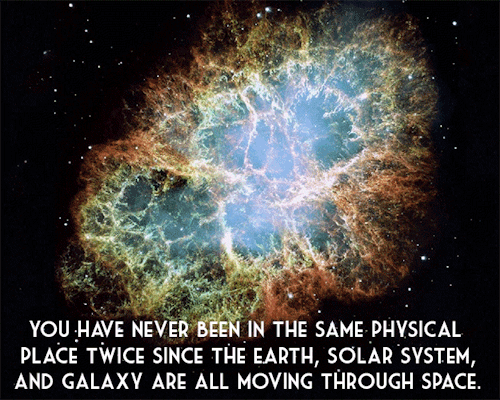I Think This One Might Be My Favorite Book In The Series...
I think this one might be my favorite book in the series...

Chapter Titles: Deep Wizardry
More Posts from Outofambit and Others

Ocean on the moon Europe
Scientists' consensus is that a layer of liquid water exists beneath Europa's surface, and that heat from tidal flexing allows the subsurface ocean to remain liquid.

Europa's surface temperature averages about 110 K (−160 °C; −260 °F) at the equator and only 50 K (−220 °C; −370 °F) at the poles, keeping Europa's icy crust as hard as granite. The first hints of a subsurface ocean came from theoretical considerations of tidal heating (a consequence of Europa's slightly eccentric orbit and orbital resonance with the other Galilean moons). Galileo imaging team members argue for the existence of a subsurface ocean from analysis of Voyager and Galileo images.

The most dramatic example is "chaos terrain", a common feature on Europa's surface that some interpret as a region where the subsurface ocean has melted through the icy crust.
The thin-ice model suggests that Europa's ice shell may be only a few kilometers thick. However, most planetary scientists conclude that this model considers only those topmost layers of Europa's crust that behave elastically when affected by Jupiter's tides.

The Hubble Space Telescope acquired an image of Europa in 2012 that was interpreted to be a plume of water vapour erupting from near its south pole The image suggests the plume may be 200 km (120 mi) high, or more than 20 times the height of Mt. Everest.
Life?
So far, there is no evidence that life exists on Europa, but Europa has emerged as one of the most likely locations in the Solar System for potential habitability. Life could exist in its under-ice ocean, perhaps in an environment similar to Earth's deep-ocean hydrothermal vents. Even if Europa lacks volcanic hydrothermal activity, a 2016 NASA study found that Earth-like levels of hydrogen and oxygen could be produced through processes related to serpentinization and ice-derived oxidants, which do not directly involve volcanism.

In 2015, scientists announced that salt from a subsurface ocean may likely be coating some geological features on Europa, suggesting that the ocean is interacting with the seafloor. This may be important in determining if Europa could be habitable. The likely presence of liquid water in contact with Europa's rocky mantle has spurred calls to send a probe there.
Missions

Europa Clipper is an interplanetary mission in development by NASA comprising an orbiter. Set for a launch in October 2024, the spacecraft is being developed to study the Galilean moon Europa through a series of flybys while in orbit around Jupiter.

The Europa Lander is a proposed astrobiology mission concept by NASA to Europa, an icy moon of Jupiter. If funded and developed as a large strategic science mission, it would be launched in 2027 to complement the studies by the Europa Clipper orbiter mission and perform analyses on site. NASA's budget for fiscal year 2021 neither mandates nor allocates any funds to the mission leaving its future uncertain.
The objectives of the mission are to search for biosignatures at the subsurface ≈10 cm, to characterize the composition of non-ice near-subsurface material, and determine the proximity of liquid water and recently erupted material near the lander's location.
source
remus would have been so good at finding loopholes for the marauders to slip through like i mean as a prefect he would have had to know all of them to an extent and i can just see sirius hopping onto his bed like “hey moony can we do this thing without technically breaking any rules” and remus would be like well no but you could do this and then guess who doesnt have detention despite the fact that all anyone at the slytherin table has had for dinner the past four days is haggis
Whale talk… a mother and her calf/baby. The best sound you can hear while diving close to whales. Mesmerizing.
Does the Lone Power have… an en-trophy wife?


I know you guys want me to draw different characters, but I love Nita so much :’)
[GWP said something about her wearing a floofy flowery dress so I had to]

Clouds Around V1331 Cyg Processing by Judy Schmidt
A complex nebular fountain-like structure that appears to originate from the star it was found around. The morphology of the nebular structure is quantified and discussed. Evidence for secular outflows is found from the optical data.[**]









9 things to seriously make you re-consider the entire existence of mankind
Source: buzzfeed.com


“Even without the high angle of a few moments ago to give the Sun something to reflect from, there was no mistaking the small, angular shape hunkered down against the rising ground in the near distance, its little camera pole sticking up…
…there was no use kicking up more dust on the hardworking little machine- it had more than enough trouble with what the winter dust storms left layered on its solar panels. The scientists at NASA had for the past couple of years been surprised and pleased that the Spirit and Opportunity rovers had managed to keep working for so long: mostly, they theorized, because of passing dust devils that blew the accumulated storm dust off them. The wizards who came up here every now and then with cans of compressed air and puffer brushes while the probes were asleep were delighted to let the scientists think that- and careful not to remove enough dust at any one time as to make them suspicious.”
-Diane Duane @dduane, A Wizard of Mars
-
 locaphi liked this · 3 years ago
locaphi liked this · 3 years ago -
 smartbrained liked this · 4 years ago
smartbrained liked this · 4 years ago -
 semkirk reblogged this · 5 years ago
semkirk reblogged this · 5 years ago -
 semkirk liked this · 5 years ago
semkirk liked this · 5 years ago -
 the-book-of-night-with-moon reblogged this · 5 years ago
the-book-of-night-with-moon reblogged this · 5 years ago -
 dammmithardison liked this · 5 years ago
dammmithardison liked this · 5 years ago -
 darksylvir liked this · 6 years ago
darksylvir liked this · 6 years ago -
 yusukesmomjeans reblogged this · 7 years ago
yusukesmomjeans reblogged this · 7 years ago -
 somadyoucouldbite liked this · 7 years ago
somadyoucouldbite liked this · 7 years ago -
 the-book-of-night-with-moon reblogged this · 7 years ago
the-book-of-night-with-moon reblogged this · 7 years ago -
 buckingfaseball liked this · 7 years ago
buckingfaseball liked this · 7 years ago -
 wonderwomanliveshere liked this · 7 years ago
wonderwomanliveshere liked this · 7 years ago -
 morhath reblogged this · 8 years ago
morhath reblogged this · 8 years ago -
 glitternotyou liked this · 8 years ago
glitternotyou liked this · 8 years ago -
 jedi-from-mimas liked this · 8 years ago
jedi-from-mimas liked this · 8 years ago -
 firebreathing-bookworm reblogged this · 8 years ago
firebreathing-bookworm reblogged this · 8 years ago -
 thewordscomealive liked this · 8 years ago
thewordscomealive liked this · 8 years ago -
 samiholloway liked this · 8 years ago
samiholloway liked this · 8 years ago -
 acleverforgery liked this · 8 years ago
acleverforgery liked this · 8 years ago -
 jazzhandsmcleg liked this · 8 years ago
jazzhandsmcleg liked this · 8 years ago -
 displayheartcode reblogged this · 8 years ago
displayheartcode reblogged this · 8 years ago -
 soilrockslove liked this · 8 years ago
soilrockslove liked this · 8 years ago -
 beerandcheese-princess reblogged this · 8 years ago
beerandcheese-princess reblogged this · 8 years ago -
 timefor-music liked this · 8 years ago
timefor-music liked this · 8 years ago -
 in-mutual-weirdness liked this · 8 years ago
in-mutual-weirdness liked this · 8 years ago -
 memesu liked this · 9 years ago
memesu liked this · 9 years ago -
 ferociouscharm liked this · 9 years ago
ferociouscharm liked this · 9 years ago -
 coffeebased reblogged this · 9 years ago
coffeebased reblogged this · 9 years ago -
 closeenough-seeya liked this · 9 years ago
closeenough-seeya liked this · 9 years ago -
 inquisitivewitch reblogged this · 9 years ago
inquisitivewitch reblogged this · 9 years ago -
 flashbackforward reblogged this · 9 years ago
flashbackforward reblogged this · 9 years ago -
 cicelythereaper liked this · 9 years ago
cicelythereaper liked this · 9 years ago -
 neuxue reblogged this · 9 years ago
neuxue reblogged this · 9 years ago -
 indubitablyzara liked this · 9 years ago
indubitablyzara liked this · 9 years ago -
 inquisitivewitch liked this · 9 years ago
inquisitivewitch liked this · 9 years ago -
 gaypanikland reblogged this · 9 years ago
gaypanikland reblogged this · 9 years ago -
 gaypanikland liked this · 9 years ago
gaypanikland liked this · 9 years ago -
 seaottersandstrings reblogged this · 9 years ago
seaottersandstrings reblogged this · 9 years ago -
 firebreathing-bookworm liked this · 9 years ago
firebreathing-bookworm liked this · 9 years ago -
 outofambit reblogged this · 9 years ago
outofambit reblogged this · 9 years ago -
 the-timeheart liked this · 9 years ago
the-timeheart liked this · 9 years ago -
 ismenes reblogged this · 9 years ago
ismenes reblogged this · 9 years ago -
 independence1776 liked this · 9 years ago
independence1776 liked this · 9 years ago -
 nandineed liked this · 9 years ago
nandineed liked this · 9 years ago
A personal temporospatial claudication for Young Wizards fandom-related posts and general space nonsense.
288 posts


